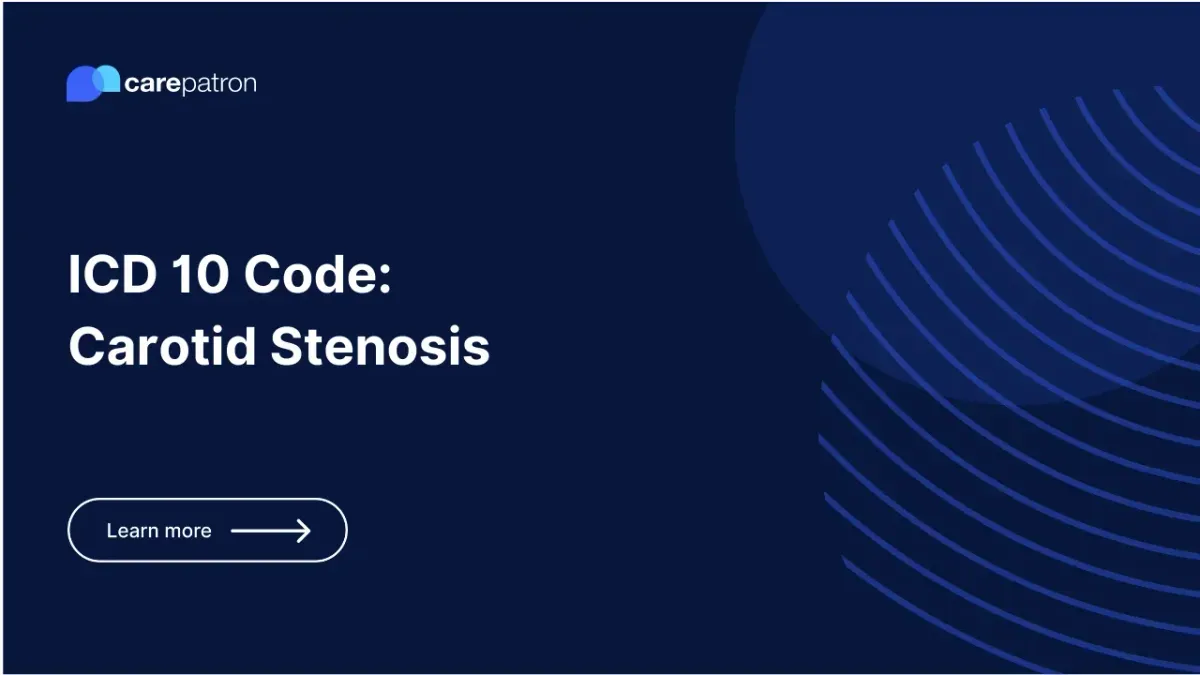
Carotid Stenosis ICD-10-CM Codes
Learn more about the ICD-10-CM codes for carotid stenosis, its clinical descriptions, synonyms, and more in this this comprehensive guide.
Use Code
Commonly asked questions
No, carotid stenosis may not always cause symptoms, but it can increase the risk of stroke or transient ischemic attacks (TIAs).
Maintaining a healthy lifestyle, controlling high blood pressure, and managing cholesterol levels can help reduce the risk of carotid stenosis.
Treatment options include lifestyle changes, medications, and, in severe cases, surgical procedures to restore proper blood flow in the carotid arteries.
EHR and practice management software
Get started for free
*No credit card required
Free
$0/usd
Unlimited clients
Telehealth
1GB of storage
Client portal text
Automated billing and online payments
